A text to speech feature allows you to add an audio version of your articles using artificial intelligence.
This is particularly useful for long reads and helps users who prefer to listen to audio content while exercising or traveling.
Plus, it makes your content more accessible for users who may have visual impairments. In our experience, any measure you take to boost accessibility is an excellent way to grow your audience.
In this article, we will show you how to easily add text to speech in WordPress.
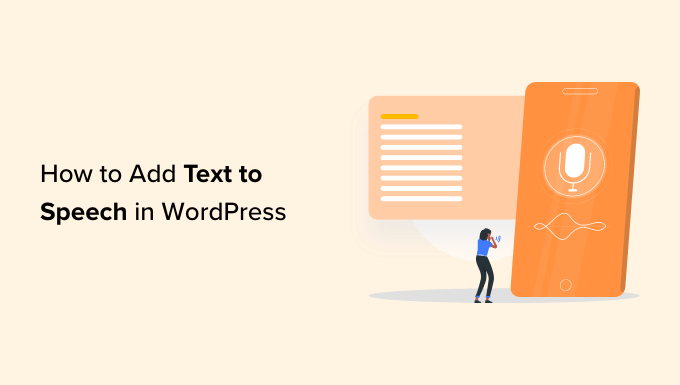
What Is Text to Speech in WordPress?
Text to speech is a technology that uses artificial intelligence to convert any text into natural-sounding speech. It is a cloud-based service by several companies, including Google Cloud and Amazon AWS.
Adding text to speech to your WordPress website allows users to listen to your blog posts while going about their daily activities like exercising, cooking, and traveling.
Text to speech can help you grow your audience by making content more accessible for the visually impaired and people with reading difficulties, improving user experience. Plus, it boosts your website SEO as search engines tend to rank inclusive websites higher.
This is where BeyondWords comes in. It is a popular AI-based audio publishing platform that allows you to easily add a text to speech feature to your website using a WordPress plugin.
It is a freemium service that comes with different pricing plans. There is also a free plan, which allows you to convert up to 30,000 characters into audio every month.
That being said, let’s see how you can easily add text to speech in WordPress using BeyondWords, step by step.
Step 1: Creating a BeyondWords Account
First, you need to visit the BeyondWords website and click on the ‘Sign Up Free’ button.
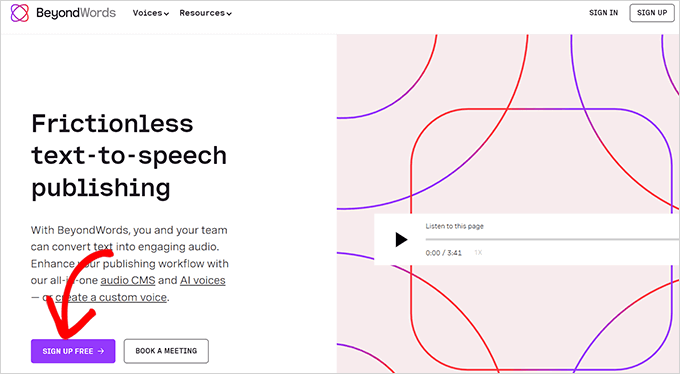
This will open up a ‘Sign Up’ page.
Here, you have to type your email address and password and then click the ‘Create My Free Account’ Button.
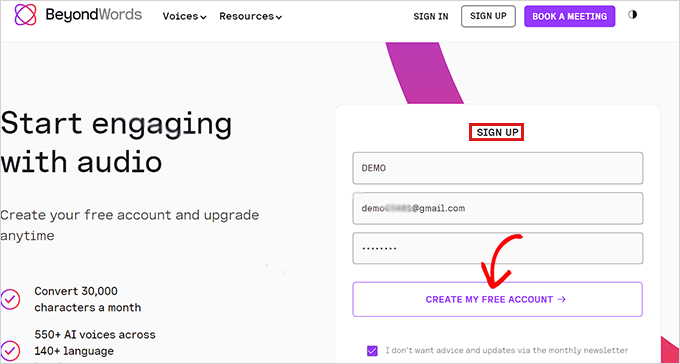
Once you have created an account, you will be taken to your BeyondWords dashboard.
From here, click the ‘Create New Project’ button to create an audio workspace for your WordPress blog.
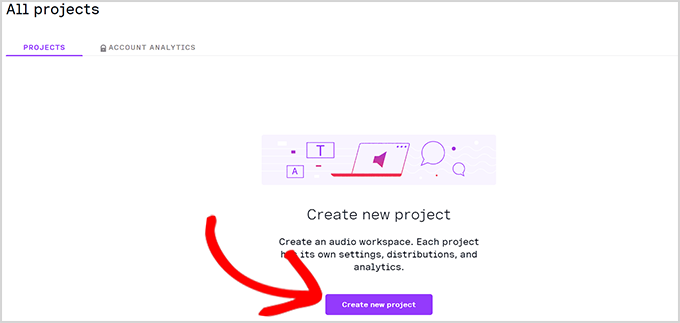
After that, a prompt will open, asking you to choose a title for your project.
Below that, you’ll have to select a language from the dropdown menu. Your articles will be narrated in the language that you choose here.
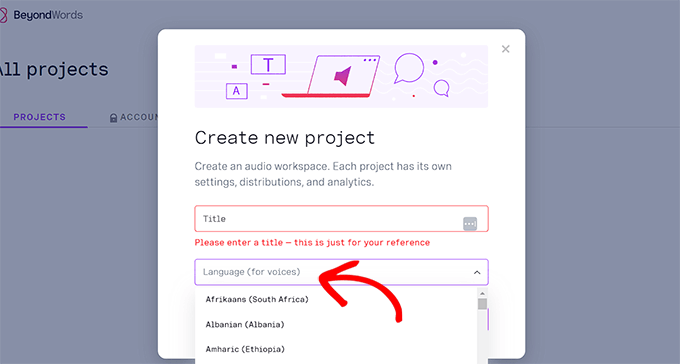
You can choose from about 143 languages that BeyondWords offers. For this tutorial, we have selected the ‘English’ language.
Once you are satisfied with your choice, simply click the ‘Create’ button to save your project.
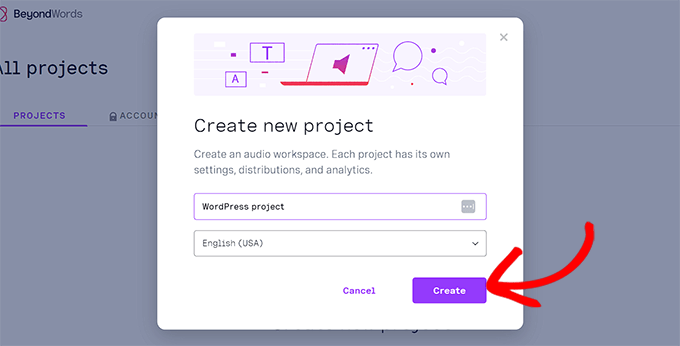
Next, you will be directed to the ‘Content’ page of your project dashboard.
Here, simply click the ‘WordPress’ tab under the ‘Connect your CMS’ column.
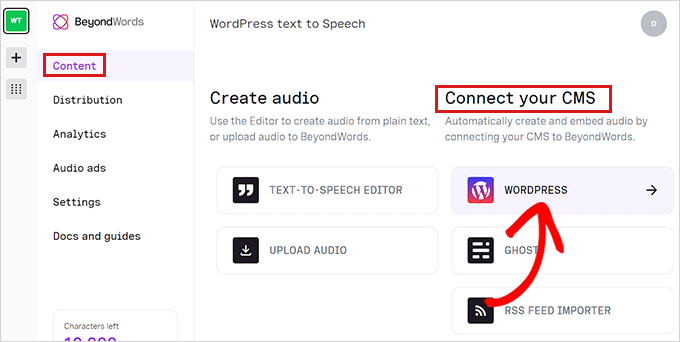
You will now be directed to the ‘WordPress Settings’ page. Here, you must configure the voice settings.
Simply go to the ‘Voice Settings’ section and select AI voices to read your article’s title and body content from the dropdown menus.
After that, don’t forget to click the ‘Save Changes’ button to store your settings.
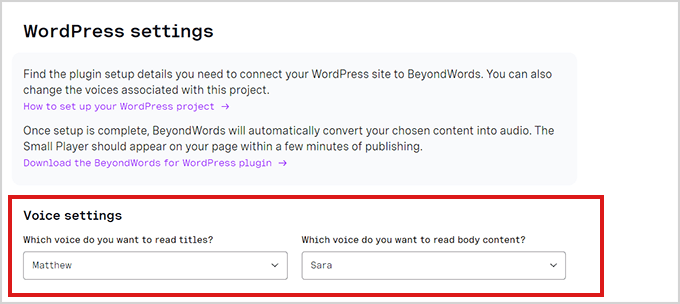
Your BeyondWords account has now been set up. Now, it’s time to connect your WordPress website with BeyondWords.
Step 2: Integrating BeyondWords With WordPress Plugin
Now, you need to install and activate the BeyondWords plugin. It is a text to speech plugin that will connect BeyondWords with your website. For more instructions, please see our beginner’s guide on how to install a WordPress plugin.
Upon activation, visit the Settings » BeyondWords page from the WordPress admin sidebar.
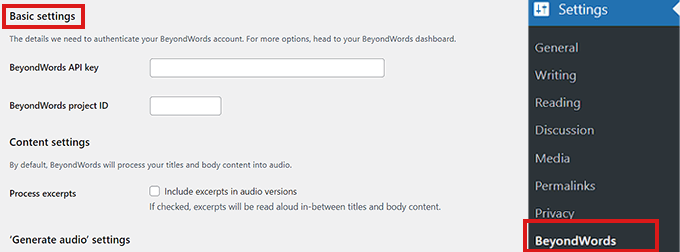
To fully integrate your account with WordPress, you’d need to add your BeyondWords API key and project ID.
For that, head over to your BeyondWords project dashboard and go to Settings » General from the sidebar.
Now, scroll down to the ‘Credentials’ section and simply copy the API key and project ID.
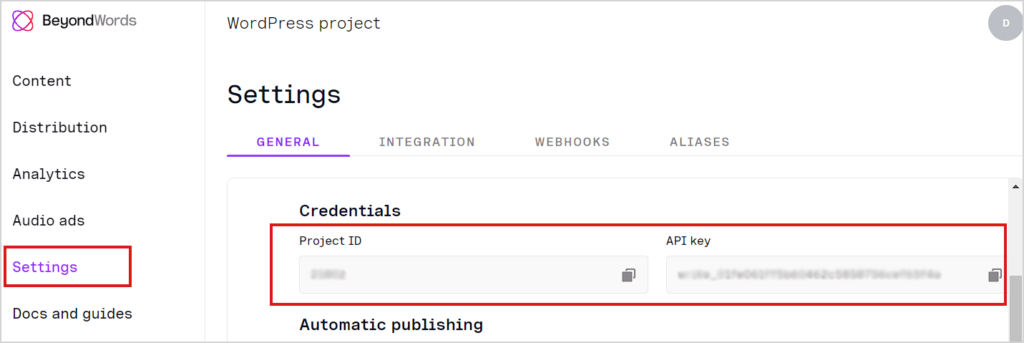
After that, head back to the WordPress dashboard and then paste your credential details.
Now, scroll down to the ‘Content Settings’ section.
If you want to include excerpts in the audio version of your content, simply check the ‘Process excerpts’ option.
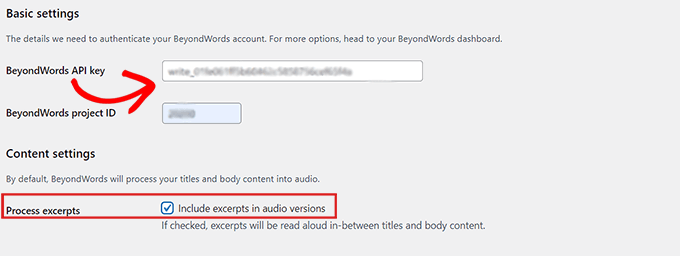
Once you do that, scroll down to the ‘Generate Audio Settings’ section and check the boxes for ‘Posts’ and ‘Pages’ if you want to generate a responsive voice for both.
You can also uncheck either of the boxes if you don’t want to generate audio for posts or pages.
Don’t forget to click the ‘Save Changes’ button to store your settings.

Step 3: Adding Text to Speech in a Post
First, you need to edit the post or page where you want to display the text to speech voice audio player.
In the block editor, simply click the BeyondWords tab in the Post Settings panel.
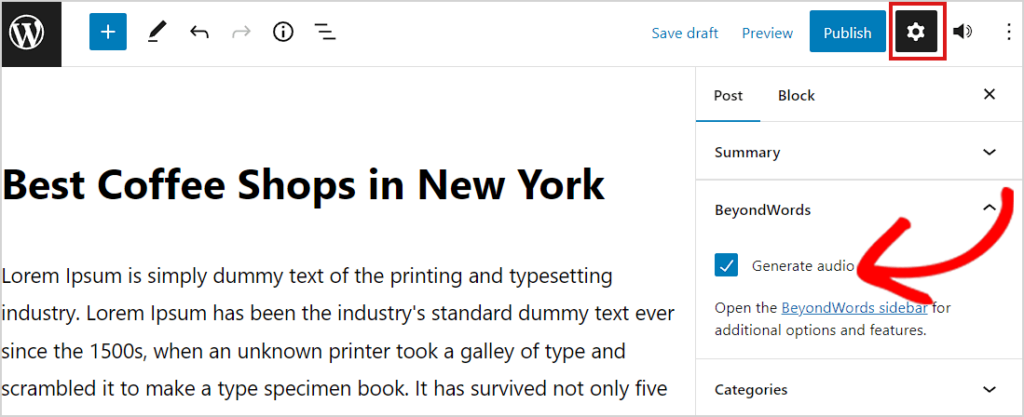
Now, you need to check the ‘Generate Audio’ box and then click the ‘Update’ or ‘Publish’ button to save your changes.
You can now visit that post or page to view the text to speech audio player in action.
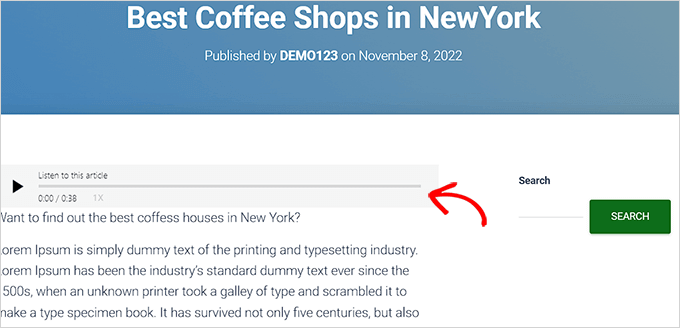
Bonus: Add Voice Search Capability to Your WordPress Site
Once you have added text to speech for your blog posts, you can also add voice search to your website.
This will allow users to search for different content on your website without having to type in anything. It is also useful for visually impaired users who may have a difficult time reading or typing and rely on voice commands to navigate the internet.
To add this function, you must install and activate the Voice Search plugin. For details, see our tutorial on how to install a WordPress plugin.
Upon activation, the plugin will work out of the box and automatically add the voice search icon to your search form.

However, if you haven’t added the search form yet, then you can visit the Appearance » Widgets page and add the ‘Search’ block from the menu.
Once you are done, just click the ‘Update’ button to store your settings.

For more information, see our tutorial on how to add voice search capability in WordPress.
We hope this article helped you learn how to easily add text to speech to your WordPress site. You may also want to see our beginner’s guide on how to add a chatbot in WordPress and our expert picks for the best team communication tools for small businesses.
If you liked this article, then please subscribe to our YouTube Channel for WordPress video tutorials. You can also find us on Twitter and Facebook.





Jiří Vaněk
I often thought about how to make my blog more accessible to people with disabilities, such as those with visual impairments. Or how to make the blog available to people who can’t read the article at the moment but would like to listen to it, for example, while driving. Converting text to speech seems like an absolutely fantastic method, which I occasionally use with my e-book reader, and I wanted to implement it on my website as well. Thank you for showing the options and services that can be used for this purpose, and that will generate high-quality and natural sound.
Dennis Muthomi
now let’s say I enable the text-to-speech audio player on an existing blog post. Then later on, I update that same post with new content. Will the existing audio file automatically update to reflect the new text? Or will a brand new audio file be generated for the updated post content?
WPBeginner Support
For the current implementation you would need to check with the support for the plugin and they will be able to let you know!
Admin
Ralph
This is amazing! Over a year ago, I started recording my articles as a podcast to do just that, but I hate it! It takes so much time, and I don’t really enjoy recording or editing audio. After 50 recordings, I don’t want to do this, but I heard Google will take audio files into consideration for SEO results. This may solve my problem. Thank you for this post.
bertha
Hi I managed to enable the text-to-speech feature and i have set up correctly the options available in Amazon Polly. However it did not display in my post even though i updated it and save changes every time. Is there a step that i miss here ?
WPBeginner Support
You would want to ensure the settings for the plugin below the post editor for your older posts has it enabled.
Admin
apptikka
Did every thing mentioned above but get this message: Verify that your AWS credentials are accurate
WPBeginner Support
You would want to ensure your access and secret keys are correct.
Admin
Mohit Dwivedi
This is so amazing! (Might be too technical for some.)
I like the fact that besides providing an alternative way to visitors to consume content, it enables us to use audio files for link-building purposes.